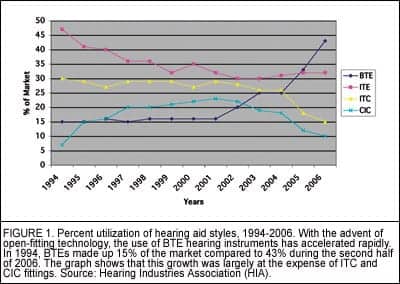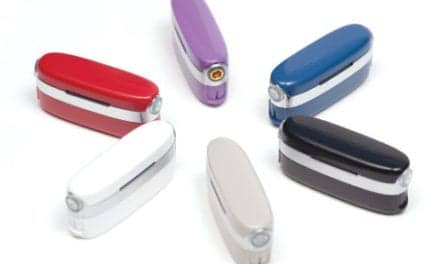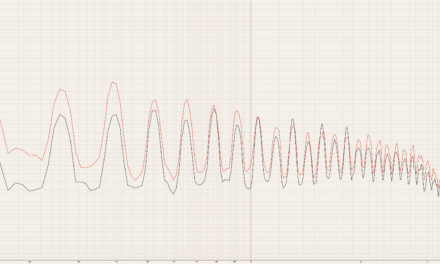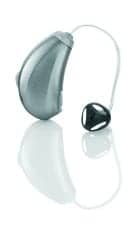Opinion
The more things change, the more they stay the same,” goes the old adage. Seasoned dispensing professionals will recall a time when most of the hearing aids they dispensed were behind-the-ear (BTE) or eyeglass instruments. For more professionals dispensing today, however, BTEs have been relegated to a fairly small percentage (15-17%) of fittings during the last decade (Figure 1).

Not anymore. According to the Hearing Industries Association (HIA), BTE-style hearing aids now make up 42.8% of the fittings performed in the second-half of 2006—after constituting less than 16% before 2001. Why? Figure 1 shows that the BTE renaissance actually began before the “rediscovery” of open-fitting technology (circa 2003). This is probably due to:

Directional systems. Some clinicians and researchers maintain that directional microphone technology is better employed in BTEs. According to the HR Dispenser Survey (June 2006), directional systems are now used in 51% of all fittings, and a special HIA survey in February 2006 showed that 35% of hearing aids used directional microphones.
DSP and more real estate. The larger packaging size of BTEs provides engineers with an opportunity to pack more electronics and features into these hearing aids. This may be even more important in the future as telecommunications and hearing aid technology converge (see the article by Yanz et al, p 60).
Although these three points have probably increased BTE use, there is no question that open-fittings have caused the real surge in BTE hearing aid use in the last 2 years.
Darrell E. Rose, PhD, suggests in this month’s lead article that, although open-fitting technology represents a wonderful tool for dispensing professionals, these systems may not be optimal if they are applied to individuals who need more gain than what some anti-feedback systems might accomodate—patients who might be better served with an occluded (modified) earmold. The rediscovery of open fittings and “The Return of the Earmold,” (p 14) has prompted younger dispensing professionals (and editors) who were not working during the Golden Age of BTEs and eyeglass hearing aids to revisit the earmold-related literature of Libby, Lybarger, Killion, et al (see Chester Pirzanski’s article on p 20), while engineers dust off patents to understand how acoustic earmold concepts were applied in the past.
What is evident is that the new capabilities and fitting options related to BTE fittings have transformed “something old” into “something new,” proving the adage that the more things change, the more they stay the same.





